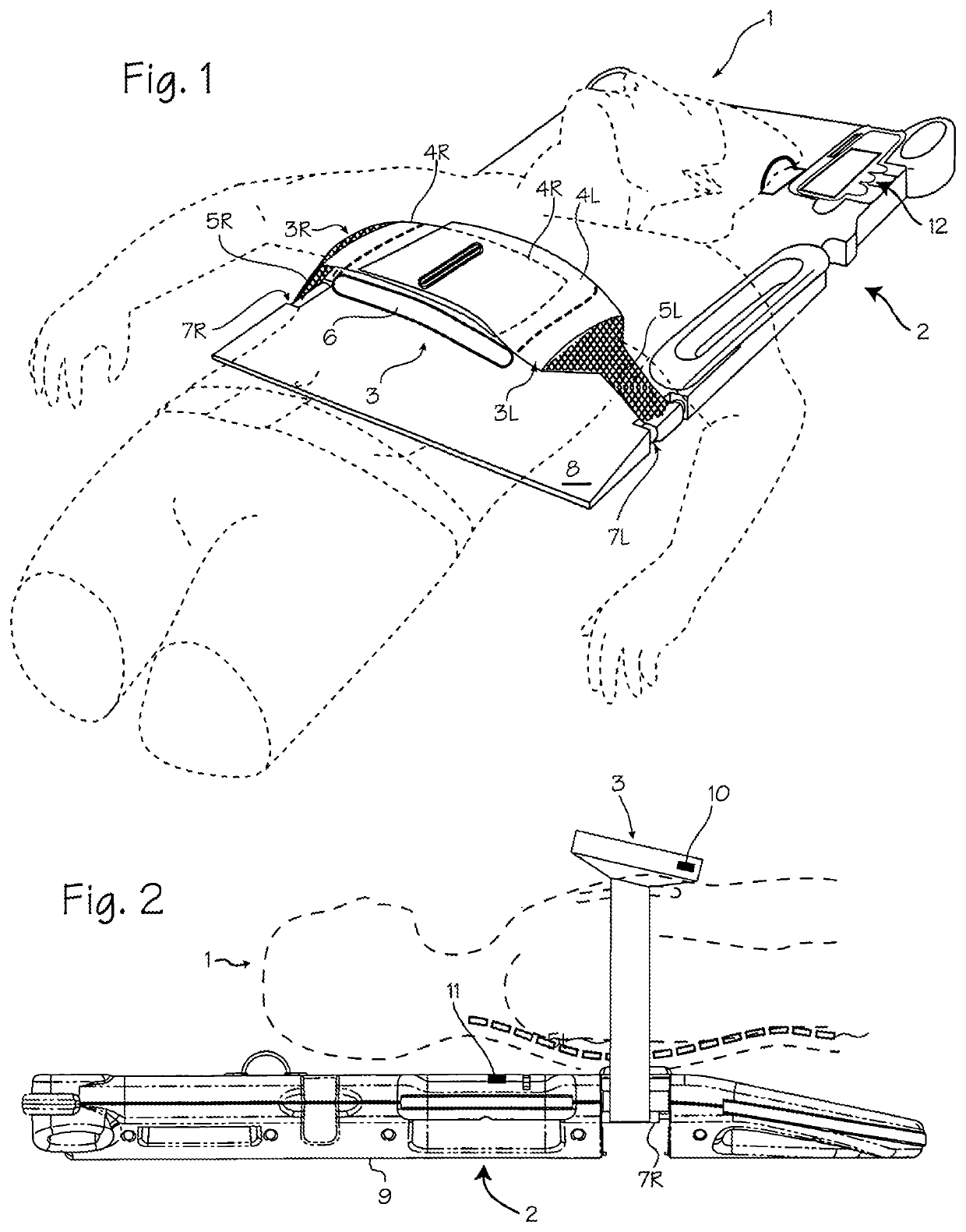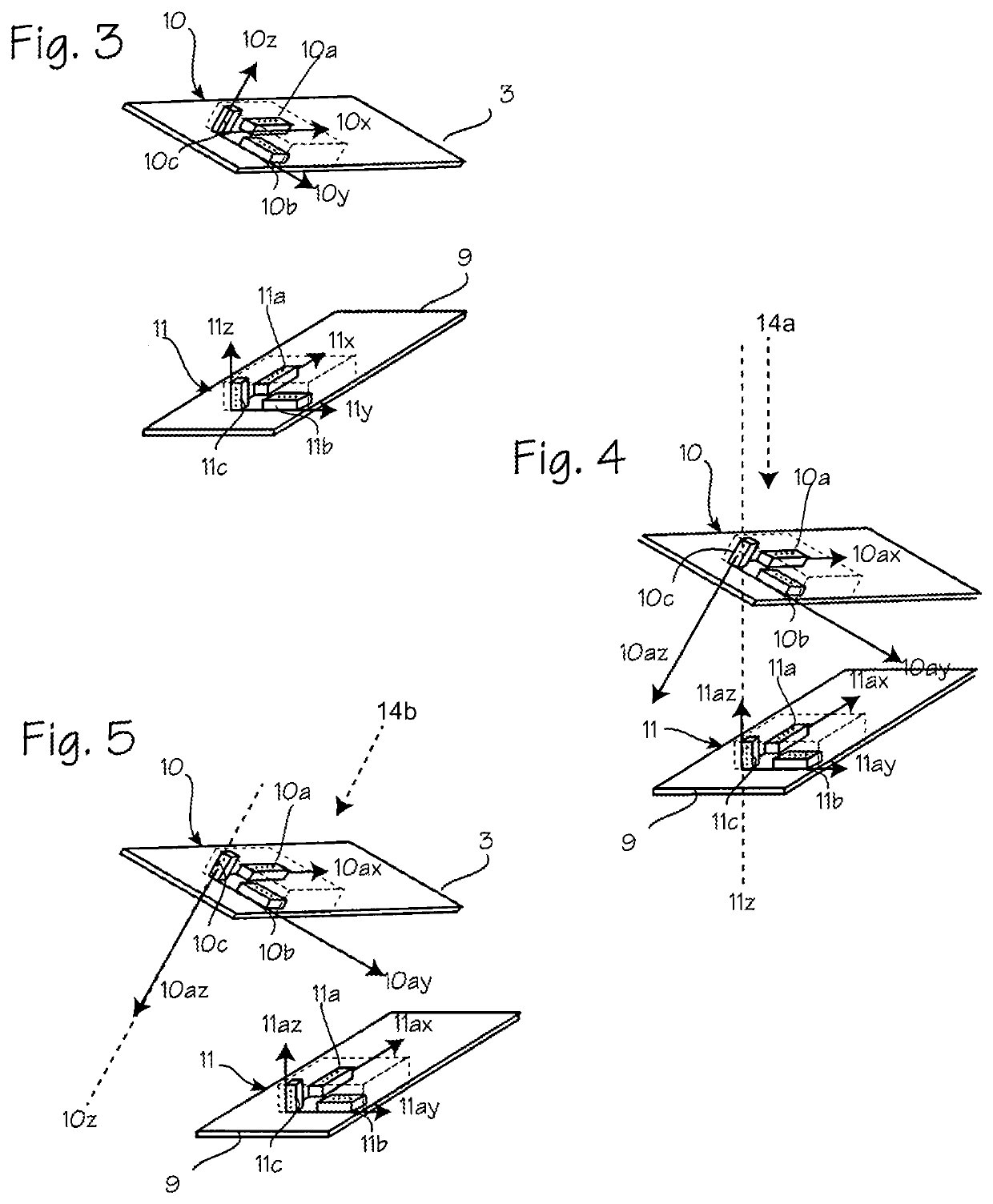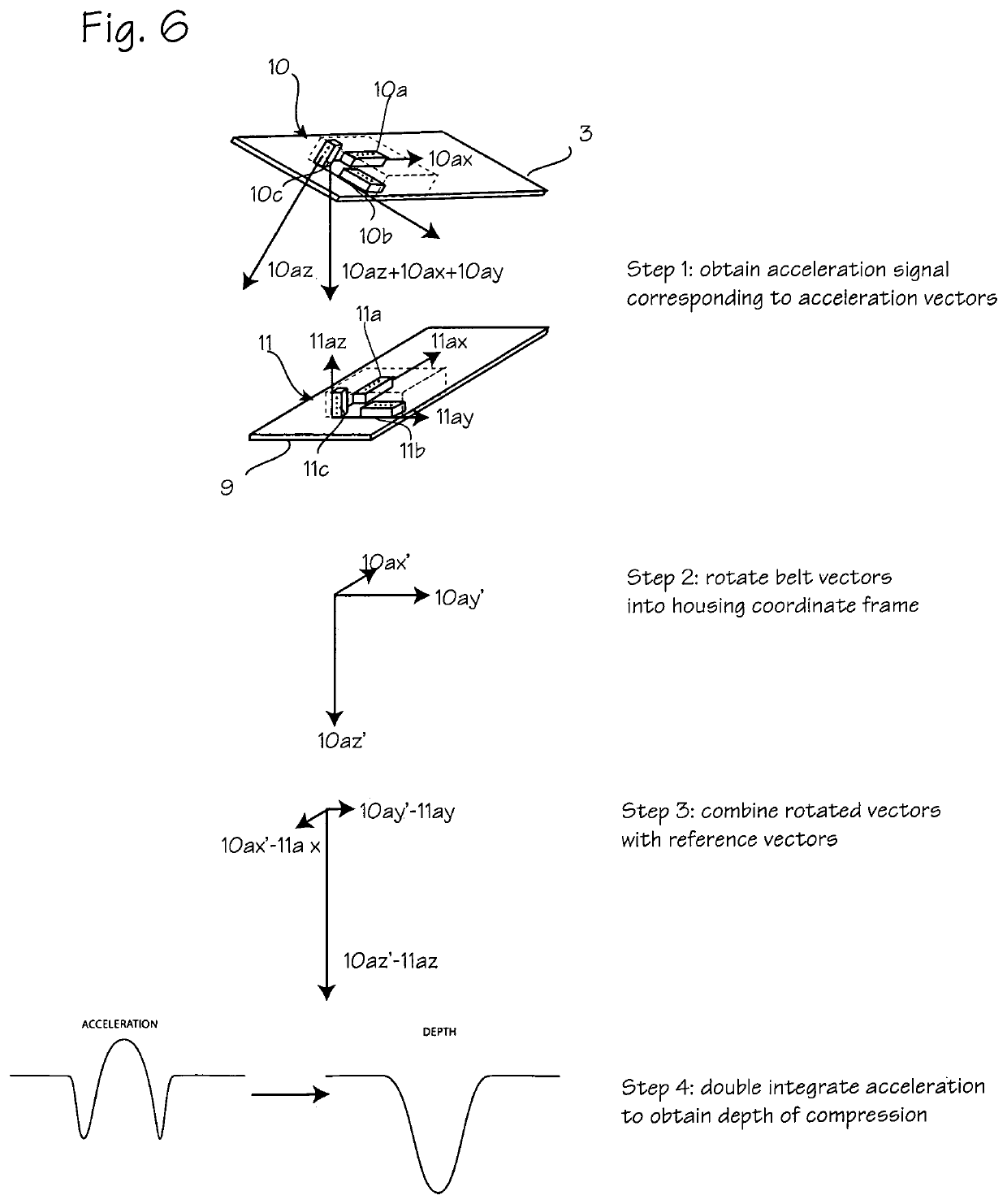Chest compression system and method
a compression system and chest compression technology, applied in the field of chest compression, can solve the problems of insufficient depth calculation and insufficient accuracy, and achieve the effect of improving the system accuracy
- Summary
- Abstract
- Description
- Claims
- Application Information
AI Technical Summary
Benefits of technology
Problems solved by technology
Method used
Image
Examples
Embodiment Construction
[0014]Though the compression monitor system described in this application can be used to provide feedback for manual CPR and automated CPR using a variety of different chest compression devices, it is described here in the context of providing feedback for a belt driven chest compression device. FIGS. 1 and 2 illustrate a belt-driven chest compression system fitted on a patient 1. The belt-driven chest compression device 2 applies compressions with the belt 3 (which may comprise right belt portion 3R and a left belt portion 3L) and load distributing portion 4 (which may comprise a single piece belt, or may comprise right and left load distributing portions 4R and 4L) designed for placement over the anterior surface of the patient's chest while in use, and tensioning portions which extend from the load distributing portions to a drive spool, shown in the illustration as narrow pull straps 5R and 5L. A bladder 6 may be disposed between the belt and the chest of the patient. The narrow...
PUM
 Login to View More
Login to View More Abstract
Description
Claims
Application Information
 Login to View More
Login to View More - R&D
- Intellectual Property
- Life Sciences
- Materials
- Tech Scout
- Unparalleled Data Quality
- Higher Quality Content
- 60% Fewer Hallucinations
Browse by: Latest US Patents, China's latest patents, Technical Efficacy Thesaurus, Application Domain, Technology Topic, Popular Technical Reports.
© 2025 PatSnap. All rights reserved.Legal|Privacy policy|Modern Slavery Act Transparency Statement|Sitemap|About US| Contact US: help@patsnap.com



